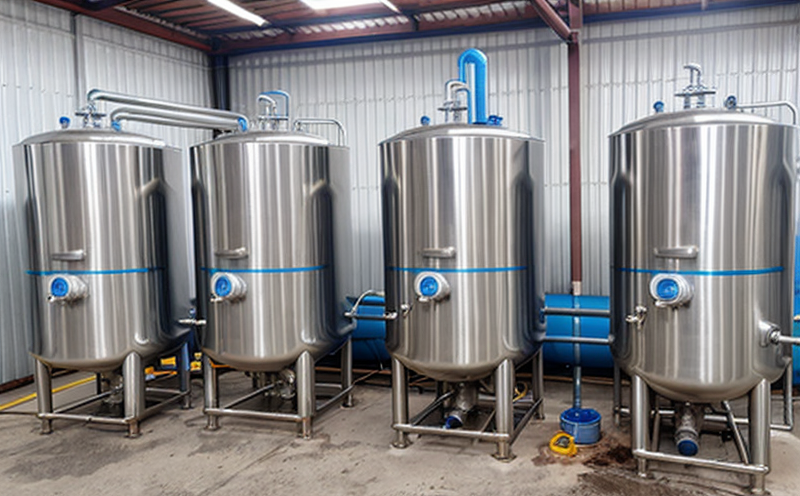ASTM D512 Chloride Ion Test in Cooling Water
The ASTM D512 method is a standardized procedure used to determine chloride ion concentrations in water samples, including cooling water. This test is crucial for ensuring the quality and efficiency of industrial processes that rely on water systems, such as those found in power plants, chemical manufacturing facilities, and HVAC systems.
Cooling water and boiler water are often subject to high chloride levels due to various factors like seawater use, brackish groundwater, or atmospheric deposition. High chloride concentrations can lead to corrosion of metal components within the cooling tower system, which in turn reduces the efficiency of heat transfer and increases energy consumption.
The ASTM D512 method employs potentiometric titration using silver nitrate as an indicator reagent for detecting chloride ions. The process involves titrating a known volume of water sample with standardized silver nitrate solution until a distinct color change is observed, indicating the endpoint of the reaction. This color change signals the presence and quantification of chloride ions in the sample.
The precision and accuracy of this test are paramount for maintaining optimal cooling system performance. The method specifies that results should be reported in parts per million (ppm) or mg/L. Compliance with this standard ensures that water quality is consistently monitored, thereby extending equipment lifespan and reducing maintenance costs.
For accurate analysis, the sample must undergo proper preparation, including filtration to remove particulate matter and possible biological contaminants. This step ensures that the chloride ion concentration measured reflects only the dissolved chloride in the water matrix. Additionally, the pH of the sample should be controlled within a specific range to prevent interference with the titration process.
The ASTM D512 method is widely recognized for its reliability and consistency across different laboratories. Its standardization ensures that results are comparable and reproducible, which is essential for regulatory compliance and internal quality control in industries where water quality directly impacts product quality or environmental impact.
In conclusion, the ASTM D512 chloride ion test is a critical tool for maintaining optimal cooling system performance by detecting and quantifying chloride ions. By adhering to this standard, industrial facilities can ensure efficient operation, extend equipment lifespan, and comply with regulatory requirements.
Scope and Methodology
The ASTM D512 method is designed for the potentiometric titration of chloride ions in water samples. It specifies a procedure where a known volume of water sample is titrated with standardized silver nitrate solution using potassium chromate as an indicator. The endpoint is determined by observing a color change from yellow to orange, which indicates the presence and quantification of chloride ions.
The method provides detailed instructions for sample preparation, including filtration to remove particulate matter and possible biological contaminants. It also outlines specific conditions that should be maintained during the titration process, such as temperature control and pH adjustment within a specified range.
ASTM D512 is applicable to various types of water samples, including potable water, industrial process water, and cooling water. The test results are reported in parts per million (ppm) or mg/L, providing precise quantitative data for chloride ion concentration.
Benefits
The ASTM D512 chloride ion test offers several benefits to industrial facilities that rely on water systems:
- Precision and Accuracy: The standardized method ensures consistent and accurate results, enhancing the reliability of quality control processes.
- Regulatory Compliance: By adhering to ASTM D512, facilities can ensure compliance with local, national, and international regulatory standards for water quality.
- Cost Savings: Early detection of high chloride levels allows for timely intervention, preventing costly equipment failures and reducing maintenance expenses.
- Environmental Protection: Monitoring chloride ion concentrations helps in minimizing environmental impact by preventing the release of harmful substances into natural water bodies.
International Acceptance and Recognition
The ASTM D512 chloride ion test is widely recognized and accepted internationally for its reliability and accuracy. This standard is endorsed by numerous regulatory bodies, including the International Organization for Standardization (ISO) and the European Committee for Standardization (CEN).
Many industries rely on ASTM D512 to ensure consistent water quality across different geographical locations. Its international acceptance facilitates seamless collaboration between laboratories in various countries, ensuring that results are comparable and reproducible.





